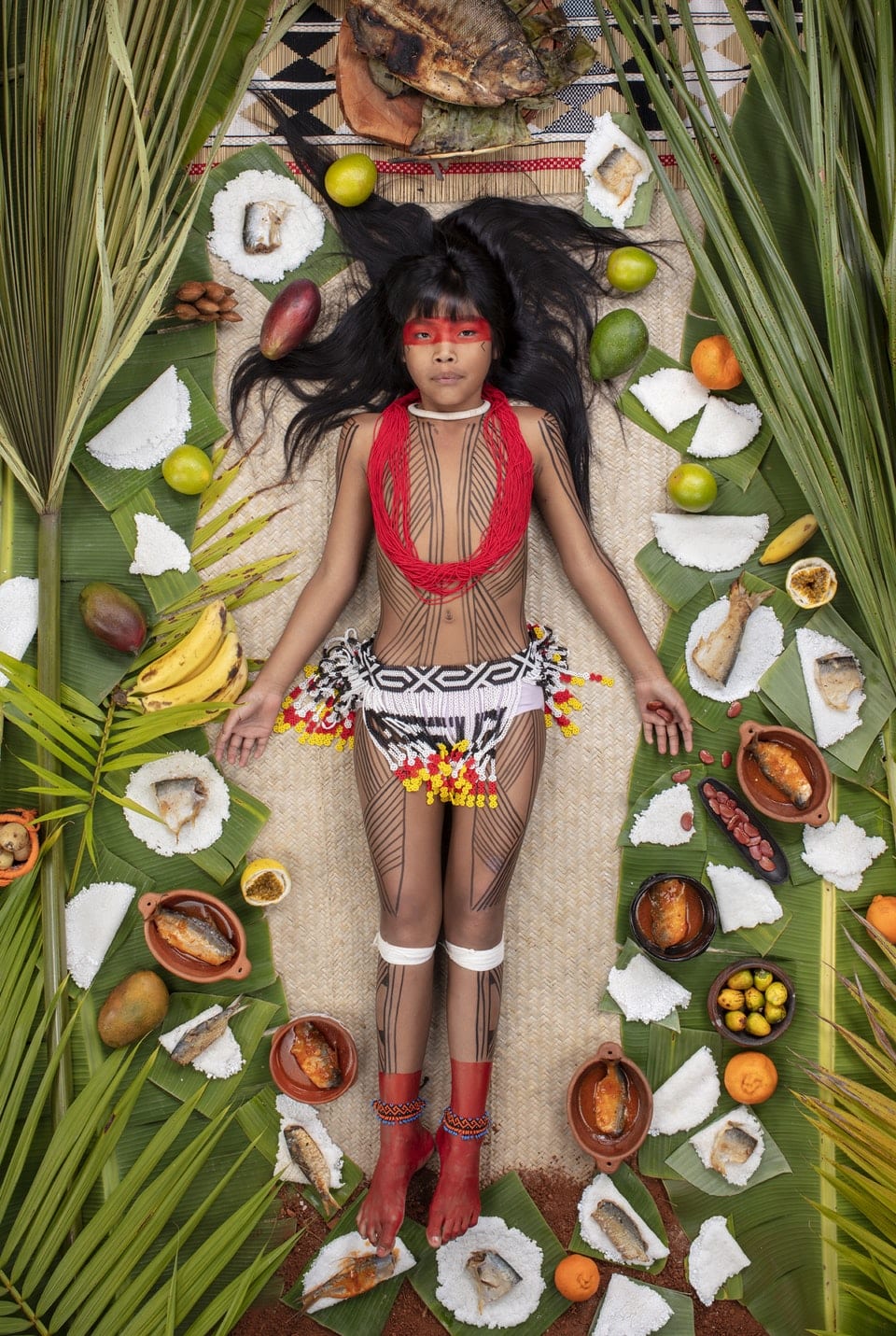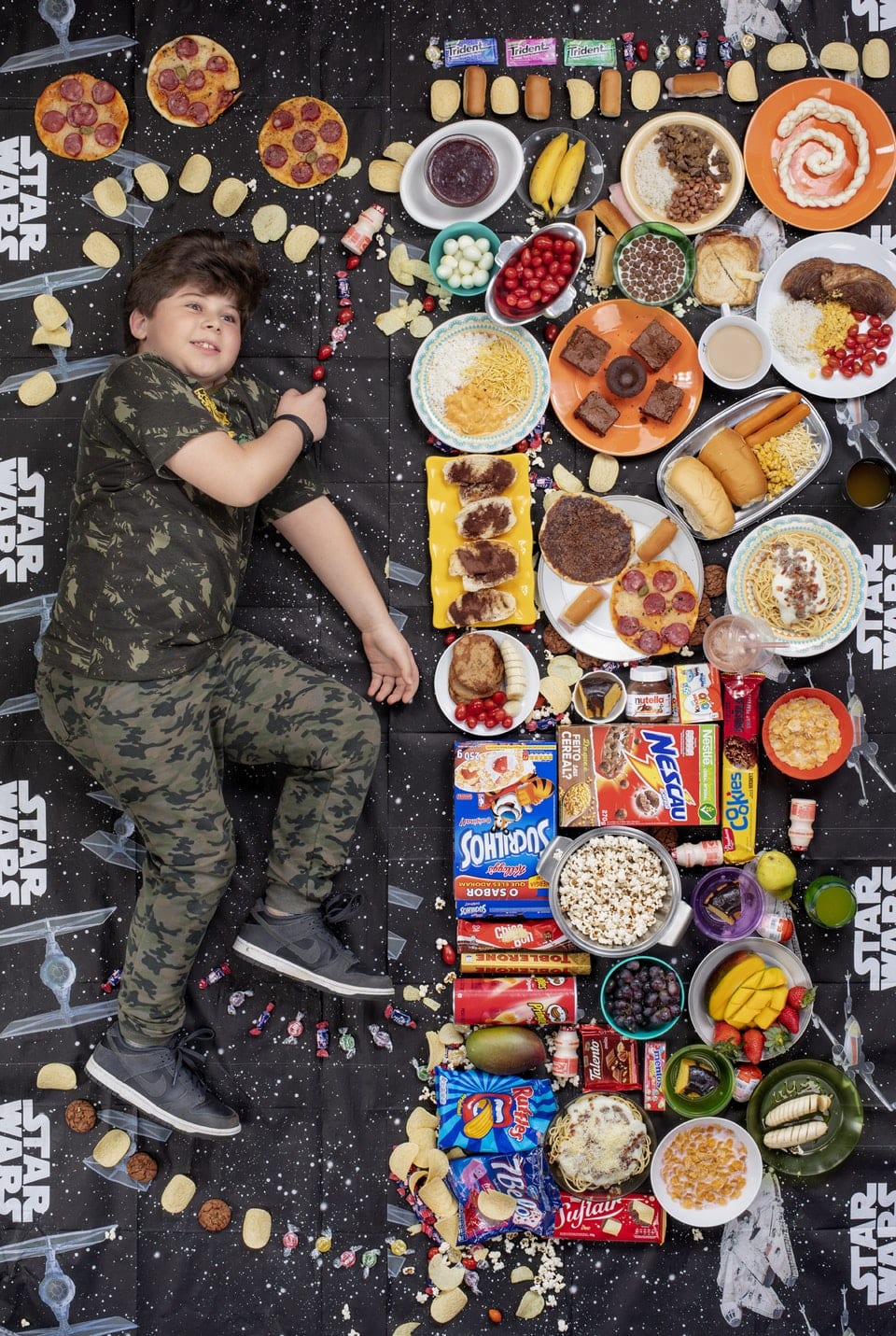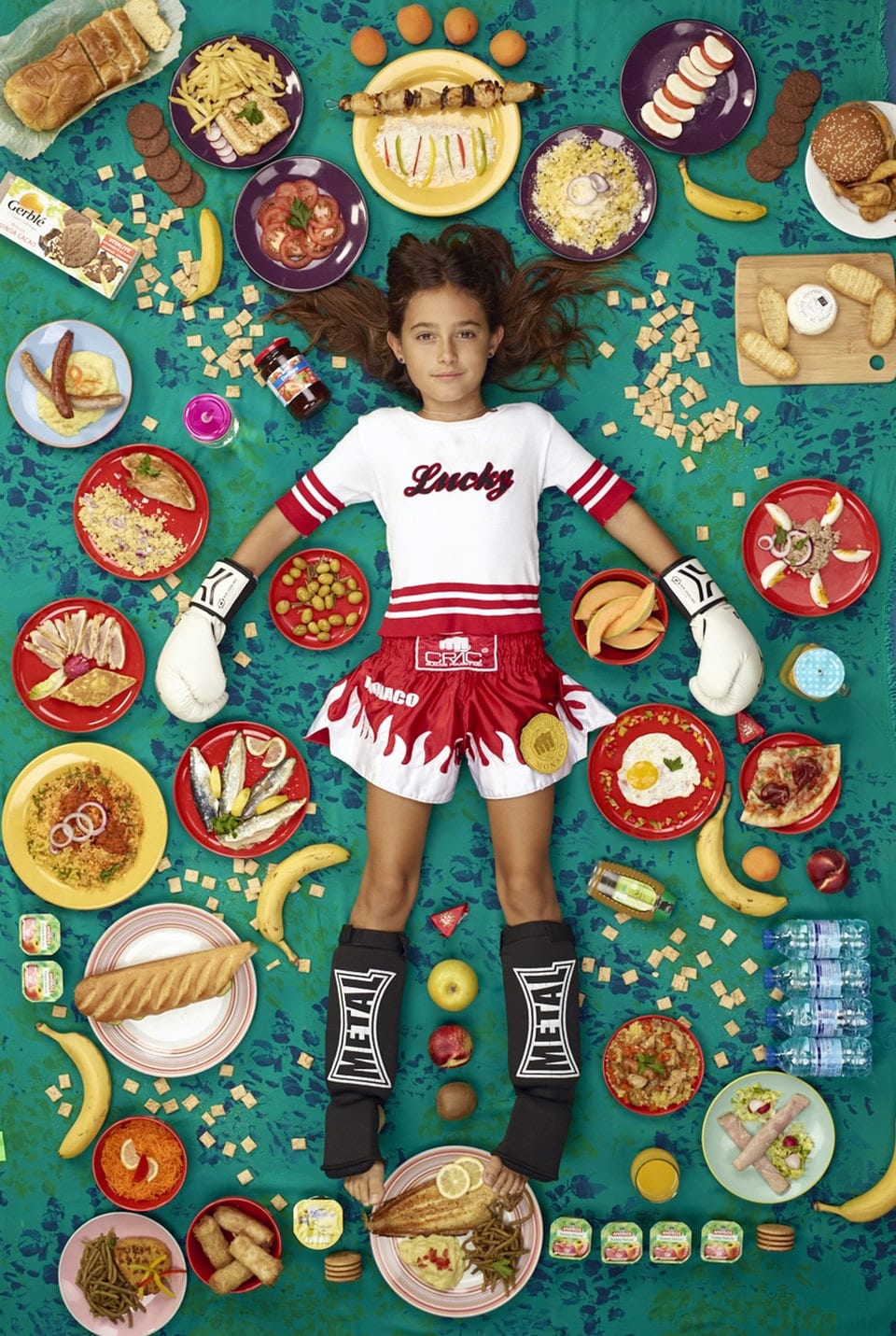As globalisation drastically alters our relationship to food, OpenWalls Arles 2020 winner Gregg Segal set out to discover what a weekly diet looks like for children across the globe.
OpenWalls Arles is a global photography award that exhibits both emerging and established photographers alongside Les Rencontres D’Arles. Enter OpenWalls Arles 2021, now seeking submissions under the theme Then & Now.
In an 8×8 metre tin hut on a construction site outside Mumbai, Anchal Sahni [above] sits down to dinner with her parents and two siblings: homemade aloo bhindi (okra and potatoes simmered in curry) and chapati (flatbread) from scratch, with a side of lentils. There is one tap of running water on the entire site. Anchal has a healthier diet than many middle-class children in India, who can afford to eat out: in Mumbai, a medium Domino’s pizza costs 13 dollars — nearly three times what Anchal’s father earns in a day.
In the West, awareness has been burgeoning around the harm of ultra-processed foods packed with salt, fat and sugar. While awareness hasn’t led to substantial change in our behaviour (since the rise of corn syrup alone, the incidence of diabetes in America has tripled), corporations — who promote junk foods to the masses through big-budget commercials — have sensed a shift in Western attitudes toward diet. They’ve begun investing heavily in foreign markets where public awareness isn’t as keen — and where Big Macs aren’t junk, but a status symbol.
“Coming from the US, naturally the biggest consumers of junk food are poorer people, because it’s cheap and convenient,” says California-based photographer Gregg Segal, one of two series winners of the OpenWalls Arles 2020 ‘Growth’ category. “It’s been said that the hand who stirs the pot rules the world. Of course, the hand that’s stirring the pot doesn’t really give a shit about our health. It only cares about making money.”
Segal’s winning series — Daily Bread, shown at Galerie Huit Arles in September 2020 — is a response to the dramatic shift seen over the last quarter century in the way we consume food. Before globalisation overwhelms traditional regional diets, the photographer made his way from Asia to the Middle East, from Europe to Africa and South America, asking children to keep a journal of everything they ate in a week. Once the week was up, he would make a portrait of the child with the food arranged around them.
Kawakanih Yawalapiti [above], aged nine, for example, is part of the Yawalapiti Tribe living in Xingu National Park, Brazil. In the space of six months alone, up to 100 million trees in the region will be destroyed by illegal logging and expanding agribusiness. The Yawalapiti and other Xingu tribes collect seeds to preserve species unique to their ecosystem, which lies between the rain forest and savannah. Kawakanih’s diet is very simple, consisting mainly of fish, cassava, porridge, fruit, and nuts — a stark contrast to, say, Henrico [below], aged ten, who comes from an affluent suburb of Brasília.
The series focuses on children because eating habits, which form when we’re young, last a lifetime — often paving the way to chronic health problems like diabetes, heart disease and colon cancer. “Even the healthcare system here in America profits from having unhealthy people”, Segal remarks, “and so many of our health problems are in large part due to what we’re putting in our bodies. Then there’s the correlation between what we put in our bodies and how we treat our environment — the packaging from that junk becomes litter everywhere.”
Incidentally, the concept for Daily Bread stemmed from an earlier project entitled Seven Days of Garbage, which Segal shot closer to home in the US. Similarly, he asked friends, family and neighbours to save their garbage for a week before lying down to be photographed in it. “It’s about making people own what they consume,” he says. “It’s very easy to consume something and just toss it in the bin, but if you have to lay in it? You think, ‘ok, we’ve made our beds, now we really have to reconcile ourselves with this.’” The photographer recalls large amounts of food packaging littered across the shots, which sparked the “epiphany” for Daily Bread.
Crucially, our shifting relationship to food consumption is not merely localised in the West, but is being felt from Mexico to Qatar, China to Brazil, Australia to India — anywhere industrialisation is on the rise. “You have to go to pretty remote places to find people who haven’t been impacted,” says Segal, “and even in more remote places, corporations are beginning to gain influence. In Brazil I found that Nestlé hired what it calls ‘micro-entrepreneurs’. It’s really just moms and pops peddling a cart through the villages selling Nestlé products.”
In 2015, the University of Cambridge conducted an exhaustive study identifying countries with the healthiest diets in the world. Nine of the top ten countries are in Africa, where vegetables, fruit, nuts, legumes and grains are staples and where meals are homemade. This is a sharp distinction from the US, where nearly 60 percent of the calories consumed come from ultra-processed foods, and only one percent comes from vegetables.
Ultimately, then, the goal of Segal’s project is to serve as a catalyst for change. The photographer vehemently maintains there are better answers than the Western diet we’ve grown accustomed to — and Daily Bread features many simple meals made from whole foods that can be prepared at home.



